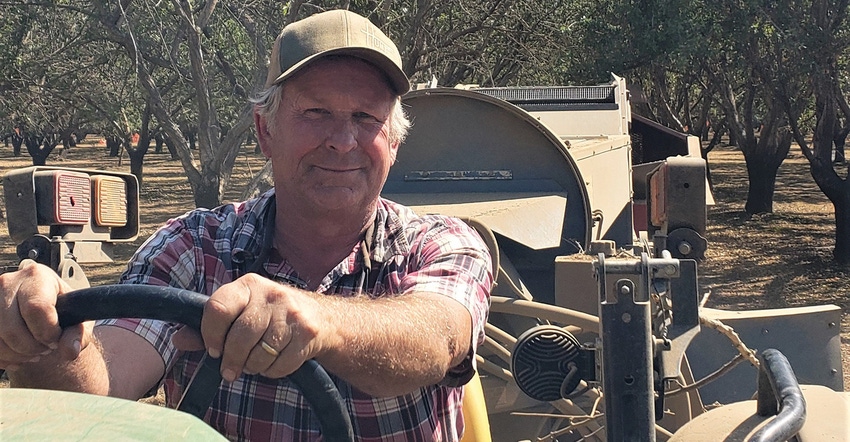
Last year about this time, Walt Stile of Chico was going about his business harvesting almonds and walnuts in his orchards, confident both crops would come in heavy.
As the Vice President of the Butte County Farm Bureau went about harvesting his several varieties of nuts -- part of a 2020 record crop -- he worked around hazy conditions from rampant wildfires and pest management applications for navel orangeworm -- all the while remaining confident of new plateau numbers.
“Word was that it would be a record crop and my greatest concern was to just get done with it, making sure everything came in right with my harvest complete before any rain might fall. My greatest concern was probably about what the market price was going to be,” he remembered.
Stile’s production amounted to just under 4,000 pounds per acre in his best orchard, far exceeding an average of 2,500 pounds in his other groves. “That’s pretty good for a dirt orchard,” said the fourth-generation farmer working both Butte and Glenn counties.
That was then. This is now. And this is Stile at the late August start of harvest time 2021: “I’m still optimistic. I thought last year, with such a record crop, would mean smaller numbers this year, but I don’t think things are going to be off more than maybe 15 or 20 percent. I do notice that kernels are smaller than last year, but the quality looks really good and the initial stuff coming in from the field, volume-wise, looks almost comparable to last year.”
With an almond harvest of six varieties over some 550 acres, Stile figures he’ll power down his harvesting equipment by the first week in October --- just in time to fire it back up again to start harvesting his 130 acres of Hartley and Chandler walnuts.
“I go day by day and that involves a mixture of praying and cussing a lot, but I’m a farmer and by nature, we’re an optimistic lot, so I still have high expectations this year. I feel really good about the quality and I’m surprised the volume is as good as it is after such a big year last year. It would appear to me that the trees didn’t take a year off.”
Industry faces water shortages
His optimism is refreshing, considering a recent Associated Press report that triple-digit temperatures and not enough water to properly irrigate some almond orchards were impacting the $6 billion industry. AP reported some farmers in the agriculture-rich Central Valley were pulling a large percentage of their orchards, post-harvest. The report quoted one grower as saying: “We may have to sacrifice (acreage) if we feel we don’t have enough water for next year.”
But where some see despair, Stile sees opportunity. “My wells are all good,” he acknowledges. “I know in the south state they’re fallowing ground, but I’ve had no problems. People in the south state are going to be looking for more ground and are starting to move up this way. Big corporations are getting more ground and think it’s a time to get in and buy land. I agree and am looking to expand in the near future.”
Recognizing the risk-versus-reward calculations of such a gamble, Stile says, “Never go with the flow and don’t follow a school fish because you’ll just end up in a net. Be independent. Dare to be different and go the other way.”
About the Author(s)
You May Also Like




